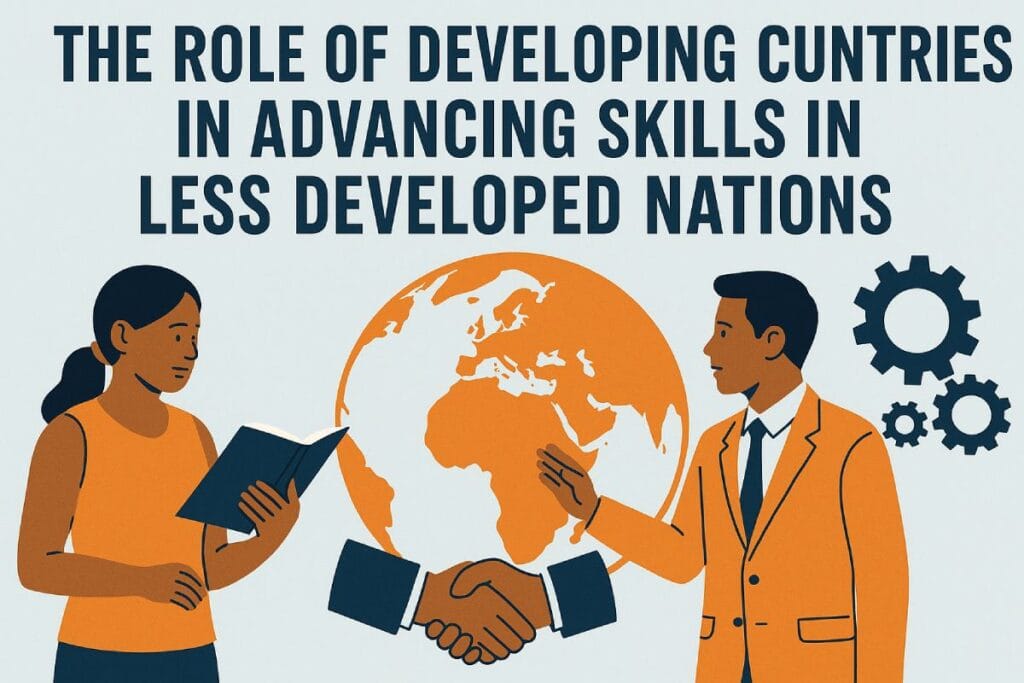The Role of Developing Countries in Advancing Skills in Less Developed Nations

Introduction
In an increasingly interconnected global economy, the gap between developing countries and less developed nations (LDCs) has come under renewed scrutiny. While much attention is given to how developed countries contribute to global skill development, a growing trend shows that developing countries themselves are becoming pivotal in facilitating the progress of less developed peers. Through regional collaboration, technology sharing, education partnerships, and labor mobility, these nations are helping elevate human capital and capacity in LDCs, fostering more inclusive global development.
South-South Cooperation as a Catalyst
One of the most effective mechanisms for skill development across developing and less developed nations is South-South cooperation. This framework emphasizes mutual growth and solidarity between countries facing similar developmental challenges. Examples include technical training exchanges between countries like India and several African nations, or the vocational training centers established by Brazil in Lusophone Africa. These collaborations are often more culturally sensitive and contextually relevant than aid from traditional Western donors, making them more sustainable in the long run.
Furthermore, many developing countries have successfully navigated specific developmental phases recently, making them ideal mentors. Their strategies are often more adaptable to the realities of LDCs than those from highly industrialized nations, which operate in vastly different political and economic contexts.
Regional Hubs of Innovation and Skills Transfer
Countries like Malaysia, South Africa, Mexico, and Vietnam are becoming regional hubs for technical education, ICT training, and entrepreneurship incubation. They are offering scholarships, opening branch campuses, and investing in cross-border e-learning platforms targeting youth from less developed neighbors. This democratization of access to skill-building opportunities is helping bridge educational and technological divides.
For instance, Kenya’s Silicon Savannah has served as a model for neighboring East African nations, inspiring similar tech ecosystems and offering practical knowledge-sharing. Likewise, India’s low-cost innovation model in health and agriculture is being exported to sub-Saharan Africa with tangible results in local capacity building.
Migration, Remittances, and Brain Circulation
Labor migration from LDCs to more economically advanced developing countries also plays a transformative role in skills development. Migrant workers often acquire technical and soft skills abroad that they bring back to their home countries, contributing to local entrepreneurship or workforce improvement. This phenomenon, known as brain circulation, contrasts the older fear of “brain drain,” and is increasingly being recognized as a development driver.
Remittances from migrants also fund education, training, and small businesses in LDCs, indirectly promoting skills development. Policies that encourage temporary migration, skills recognition, and return incentives can amplify these benefits and institutionalize the transfer of knowledge.
Challenges and Future Directions
Despite their growing role, developing countries face several constraints. These include limited resources, internal development needs, and geopolitical instability. There’s also a risk of unequal partnerships where certain nations dominate the exchange process, replicating exploitative patterns seen in North-South relations.
To truly maximize their impact, developing countries must adopt inclusive, mutually beneficial partnerships, backed by regional institutions like the African Union, ASEAN, and MERCOSUR. Investment in digital infrastructure, research collaborations, and regional labor mobility agreements will be crucial to building a sustainable ecosystem for skill transfer and development.
Conclusion
Developing countries are no longer passive recipients in the global development arena. Through strategic cooperation, shared experiences, and practical innovation, they are playing an essential role in uplifting the human capital of less developed countries. By fostering equitable partnerships and emphasizing shared growth, they are not only helping bridge the global skills divide but also shaping a more resilient and collaborative global future.
Source : Medium.com




